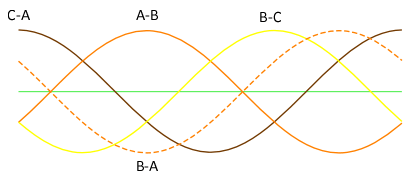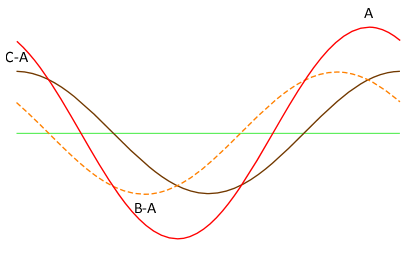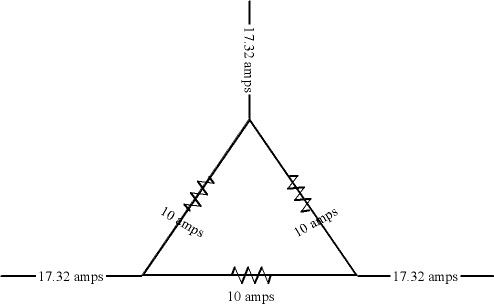Phase
Member
- Location
- Waterdown ontario Canada
Before i start i want to make it clear that i do understand the 120 degree phase shift dissplacment between each phase, i do have basic understanding of wye delta systems and the voltage current differences between them example (square root of 3,1.732) I do very well understand why the square root of 3 expresses the voltage and current differences. (Sounds like I'm controdicting myself I know :ashamed1
I might be reading into this a bit to much and creating issues that do not exist, but I have been struggling with current flow specifically in a delta connected load. Im not concerned with what type of loads (resistive,capacitive,inductive). If we have a 3 phase Transformer connected delta and a load that is connected delta, why is it if all 3 phases in the load are drawing and equal amount of current lets say 57amps the line amperage will be greater by the square root of 3.? Let me just say this, I understand a wye connected secondary systems voltage differences, lets say a wye system has a coil voltage of 120v across each phase, I then measure the voltage across 2 phases I would be measuring the square root 3 so 208v. I also understand the current in a wye system will be same across each phase opposed to the line, makes perfect sense!!
But for the life of me I can't get this through my head concerning a delta system, I understand that at any period of time in a balanced 3 phase system current / voltage will never be at its maximum value at once and at other times will be divided between only 2 phases.
Example - at one point in time phase A will be at its most positive peak, phase B & C will be in there negative direction but less then maximum. Another point in time phase A will now be zero and phases B&C will be of opposite polarity but less then maximum. This is why it will be impossible to add the sum of two coils voltage lets say.
Someone please help me with this. :slaphead:
I might be reading into this a bit to much and creating issues that do not exist, but I have been struggling with current flow specifically in a delta connected load. Im not concerned with what type of loads (resistive,capacitive,inductive). If we have a 3 phase Transformer connected delta and a load that is connected delta, why is it if all 3 phases in the load are drawing and equal amount of current lets say 57amps the line amperage will be greater by the square root of 3.? Let me just say this, I understand a wye connected secondary systems voltage differences, lets say a wye system has a coil voltage of 120v across each phase, I then measure the voltage across 2 phases I would be measuring the square root 3 so 208v. I also understand the current in a wye system will be same across each phase opposed to the line, makes perfect sense!!
But for the life of me I can't get this through my head concerning a delta system, I understand that at any period of time in a balanced 3 phase system current / voltage will never be at its maximum value at once and at other times will be divided between only 2 phases.
Example - at one point in time phase A will be at its most positive peak, phase B & C will be in there negative direction but less then maximum. Another point in time phase A will now be zero and phases B&C will be of opposite polarity but less then maximum. This is why it will be impossible to add the sum of two coils voltage lets say.
Someone please help me with this. :slaphead:





